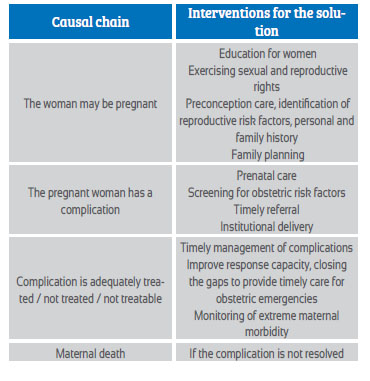Report on the ‘Zero Maternal Deaths’ Initiative in Honduras and its Contribution to Sustainable Development Goals
Introduction: Addressing SDG 3 – Good Health and Well-being
- The “Zero Maternal Deaths by Hemorrhage” initiative in Honduras represents a targeted effort to advance Sustainable Development Goal 3 (Good Health and Well-being), specifically addressing Target 3.1, which aims to reduce the global maternal mortality ratio.
- From a public policy perspective, the Ministry of Health identified the high maternal mortality rate as a critical failure of the national health system. Rosa Marlen Flores, Head of the Comprehensive Care Program, emphasized that maternal mortality is the most sensitive indicator of a country’s health system, with each death representing a significant loss to family and society.
Operational Enhancements and Strategic Implementation
Alignment with SDG 3 and SDG 17
- The initiative’s success is rooted in systemic improvements within healthcare facilities, directly contributing to SDG 3. Dr. Nuri Bonilla, an obstetrician-gynecologist at Gabriela Alvarado Hospital, reported a fundamental shift from chaotic and uncoordinated emergency responses to a highly organized, protocol-driven system.
- This transformation was achieved through strategic training and the implementation of standardized protocols, reflecting a commitment to strengthening health systems through effective partnerships (SDG 17).
Key Procedural Improvements:
- Organized Teams: Establishment of dedicated, trained teams for obstetric emergencies, replacing a previously fragmented approach.
- Rapid Response Alarms: Implementation of alarms to ensure immediate action, minimizing critical delays that previously led to adverse outcomes.
- Standardized Protocols: Introduction of “Code Red” protocols and ready-to-use emergency kits, ensuring a consistent and effective response in every critical situation.
Policy Impact and Broader SDG Contributions
Strengthening National Health Infrastructure (SDG 3 & SDG 17)
- The program demonstrates a significant partnership for the goals (SDG 17) through its comprehensive nationwide implementation.
- Zero Maternal Death Teams have been established in all 28 national hospitals.
- Training in maternal mortality surveillance committees has been extended to approximately 90% of municipalities, creating a robust monitoring and accountability framework.
Advancing Gender Equality and Reducing Inequalities (SDG 5 & SDG 10)
- By safeguarding maternal health, the initiative directly contributes to SDG 5 (Gender Equality), empowering women and ensuring their right to survive childbirth.
- As noted by ministry officials, preventing a maternal death preserves the family unit and prevents children from growing up without a mother. This has profound implications for reducing household vulnerability and future inequality (SDG 10).
Conclusion: Measurable Outcomes and Progress Towards SDGs
- The “Zero Maternal Deaths” initiative has successfully transitioned from a conceptual goal to a tangible reality across the Honduran healthcare system.
- The primary outcome is a marked reduction in preventable maternal deaths through enhanced coordination, standardized procedures, and rapid response capabilities, directly advancing SDG 3.
- The program serves as a functional model for achieving the SDGs, demonstrating that targeted interventions, policy commitment, and multi-level collaboration (SDG 17) can produce life-saving results and strengthen the resilience of national health systems.
1. Which SDGs are addressed or connected to the issues highlighted in the article?
The article primarily addresses issues related to Sustainable Development Goal 3, which aims to ensure healthy lives and promote well-being for all at all ages.
-
SDG 3: Good Health and Well-being
The entire article is centered on the “Zero Maternal Deaths” program in Honduras. This initiative directly contributes to improving health outcomes, specifically for mothers. The text highlights the transformation from a “chaotic” emergency system to one with “organized teams, rapid response alarms, and protocols that truly save lives.” This focus on reducing maternal mortality and strengthening the health system is the core of SDG 3.
2. What specific targets under those SDGs can be identified based on the article’s content?
Based on the article’s focus, the following specific targets under SDG 3 can be identified:
-
Target 3.1: By 2030, reduce the global maternal mortality ratio to less than 70 per 100,000 live births.
The article’s central theme is the effort to prevent maternal deaths. The program’s name, “Zero Maternal Deaths,” and the statement by Rosa Marlen Flores that “maternal mortality is the most sensitive indicator of a country’s health system” and “each mother we lose is a broken family” directly align with the goal of reducing the maternal mortality ratio.
-
Target 3.8: Achieve universal health coverage, including financial risk protection, access to quality essential health-care services and access to safe, effective, quality and affordable essential medicines and vaccines for all.
The article describes significant improvements in the quality of essential healthcare services. Dr. Nuri Bonilla’s testimony about implementing “Code Reds, ready-to-use emergency kits, and, most importantly, a team that knows exactly what to do in every critical situation” demonstrates a clear effort to enhance the quality and reliability of emergency obstetric care, which is a key component of universal health coverage.
-
Target 3.c: Substantially increase health financing and the recruitment, development, training and retention of the health workforce in developing countries, especially in least developed countries and small island developing States.
The article explicitly mentions the training and development of the health workforce. The statement that the program provided “Zero Maternal Deaths training” and trained “around 90% of municipalities in maternal mortality surveillance committees” shows a direct investment in the skills and capacity of healthcare professionals, which is the focus of this target.
3. Are there any indicators mentioned or implied in the article that can be used to measure progress towards the identified targets?
Yes, the article mentions and implies several indicators that can be used to measure progress:
-
Indicator for Target 3.1 (Maternal Mortality Ratio)
The article explicitly refers to “maternal mortality” as the “most sensitive indicator of a country’s health system.” While it doesn’t provide a new number, the goal of the program is to reduce this specific metric, making it the primary indicator of success.
-
Indicators for Target 3.8 (Service Coverage and Quality)
The article provides several qualitative and quantitative indicators of improved service capacity and quality:
- Number/Percentage of hospitals with specialized teams: “implementing Zero Maternal Death Teams in all 28 hospitals in the country.”
- Implementation of standardized emergency protocols: The establishment of “Code Reds” and “ready-to-use emergency kits” serves as an indicator of improved quality and preparedness in health facilities.
- Reduced response time: The shift from losing “valuable time” to being “in action within seconds” is a qualitative indicator of improved service efficiency.
-
Indicators for Target 3.c (Health Workforce)
The article provides a clear indicator for measuring the development of the health workforce:
- Percentage of trained personnel/municipalities: The program has “train[ed] around 90% of municipalities in maternal mortality surveillance committees,” which is a direct measure of workforce development and capacity building.
4. Table of SDGs, Targets, and Indicators
| SDGs | Targets | Indicators |
|---|---|---|
| SDG 3: Good Health and Well-being | 3.1: Reduce the global maternal mortality ratio. | Maternal mortality rate (explicitly mentioned as the “most sensitive indicator”). |
| SDG 3: Good Health and Well-being | 3.8: Achieve universal health coverage, including access to quality essential health-care services. |
|
| SDG 3: Good Health and Well-being | 3.c: Substantially increase health… training and retention of the health workforce. | Percentage of municipalities with trained surveillance committees (around 90%). |
Source: paho.org







